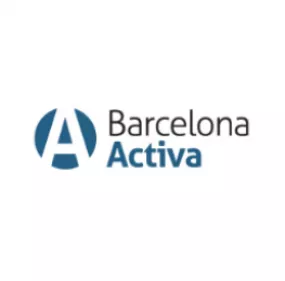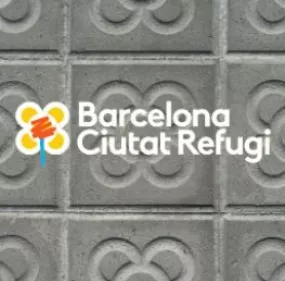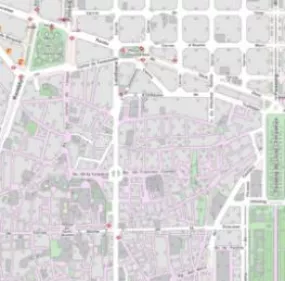
The new Abaceria Market will become a new public space in Gràcia and will be more permeable and efficient

The new Mercado de l’Abaceria already has a definitive proposal for the design and distribution of spaces. It incorporates all viable neighborhood and merchant input. The Barcelona Municipal Institute of Markets (IMMB) will proceed to process the approval of this basic project for the equipment and the necessary urban instruments and the team will continue to draft the executive project necessary for its adjudication and execution.
This proposal incorporates more living space for the surrounding neighborhood, a roof that facilitates energy efficiency, a new access through Torrijos street, floor -3 will become a new storage area for the neighborhood’s associative and commercial fabric, The structure will be replicated by one that responds to the needs of the equipment and the renaturation of the environment. In summary, this modification of the initial project will make the Mercat de l’Abaceria a new public space for the Gràcia district.
A market conceived as a new public space for the district of Gràcia
The modifications incorporated into the basic project will make the new Mercat de l’Abaceria a new living area for the Gràcia district. Thus, a large space is recovered throughout the city and, more specifically, through the whole of the Gràcia squares with an area of about 1,500 square meters, becoming the Plaza del Mercado Central de l’Abaceria.
And it is that with this new distribution space is recovered around the perimeter of the market and, more obviously, in the area of Calle de la Virgen de los Desamparados, where the end result is a public space of similar sizes in the square of the Revolution. Likewise, with respect to the initial proposal, in the Virgen de los Desamparados space, the communication nuclei that could become a visual obstacle from this “new square” to the interior of the Market are minimized, integrated and reduced.
As for the roof, its noble image will be returned, making it compatible with a space for energy efficiency. Ceramic pieces and flush photovoltaic panels will be alternated with a colorful treatment, as appropriate for a protected building of these characteristics. Using this innovative technology, it generates power without the need for large dust jackets or visually aggressive parts. The roof in the “Nova Plaça” area will have large openings and allow light to pass through.
In the same line of making the market a large public space that is permeable so that citizens can cross it, a new access to the facade of Calle Torrijos is created, which previously did not have due to the presence of the access ramp in the basements From the market. This access makes the establishment of cooperative self-service or other social uses in this plant not viable. In any case, it will enable a large lobby area for temporary activities of all kinds.
During the initial works of the project, the engineering teams have detected that the current structure could not bear the load of the future roof due to a lack of quality of the metal alloy of the same. For this reason, the rehabilitation of the structure necessarily involves its disassembly and the construction of a new one that exactly replicates the current one but with a material that meets the technical requirements. This operation has been carried out, for example, in the Barceloneta Market and partially in Sant Antoni.
On the other hand, the debate process has led to establish that plant -3 will become a space for logistical use for the entities of Gràcia. Finally, although in this phase a complete description of the global urbanization of the surroundings has not yet been made, the project already includes a significant presence of green in the new square, as well as the immediate perimeter spaces.
Objectives of the reform
The Abaceria market with the agreed reform proposal, represents an opportunity to:
- Preserving the largest equipment in the neighborhood in terms of offering fresh and healthy food, aimed at local and quality products.
- Maintain a significant number of small proximity businesses, and their jobs.
- Promote the backbone and social cohesion role played by the market, with greater provision of meeting spaces for residents and multifunctional uses for the neighborhood’s associative fabric.
- Comprehensive rehabilitation of the building through an architectural project, which must include, in a particularly relevant way, obtaining a sustainable market consistent with the objectives of the climate emergency: clean energy generation facilities, isolation of equipment, management by recycling waste or energy saving equipment.
Planned commercial, logistics and service program
The entrances to both the attic floor and the floor -3 for entities have been designed avoiding interferences between the different uses. All these spaces will have their own accesses that will allow the installation to work at the same time, or parceled out independently. The same will happen with the outdoor non-food stalls, which have direct access from the street.
The self-service can also have independent hours of the market’s own operation on holidays of special opening of the trade, even if it has access from the sales room. Regarding the vertical communication between the different levels of the building, all the floors will be connected by 6 mixed lifting devices. And all plants will have services.
The remodeling proposal foresees the market floor plan, a two-storey loft and three underground floors.
Mezzanine floor (1,050 m2) divided into two heights:
- Management office, sellers association office, two open classrooms (or multipurpose classrooms) and technical rooms
Low level:
- Food market: 51 indoor, 41 food and 10 outdoor non-food establishments (2,445’5 m2)
Floor -1:
- New establishment with self-service format (1,225 m2 with a minimum of 750 m2 of commercial area and the rest for logistics area)
- Warehouses and cold rooms and waste spaces (315 m2)
Floor -2:
- Warehouses and cold rooms (600 m2)
- Parking for customers with 50 spaces. Open only during business hours
- Waste spaces (144’98 m2
Double height space (parallel to floors -1 and -2)
- Double gauge loading and unloading space and reserve for industrial vehicles (1,050m2)
On Floor -3 (3,696 m2 approx):
- Spaces with logistical uses for neighborhood entities and associations.
The possibility is contemplated that carriers that take merchandise to the shops in the perimeter closest to the market can carry out loading and unloading operations in the logistics area of the market.
A new Market with the incorporation of new fresh operators
The definitive market will have a constructed area of 14,350 square meters and foresees the incorporation of new operators that complement the market’s fresh offer and provide the equipment with the services and logistics that the vast majority of markets in the city already have to facilitate the various activities that are developed.
Located in Travessera de Gràcia, in the heart of the neighborhood since the 19th century, the market of l’Abaceria has been a reference for local commerce, essentially food, in the neighborhood. Dynamic engine of commercial activity and social life, it is the largest commercial facility within the Travessera de Gràcia Commercial Hub.
In July 2016, after several studies, works, negotiations, proposals and a broad participatory process with the neighborhood, merchants and paradistas, the Barcelona Municipal Market Institute and the Market Vendors Association signed the market remodeling agreement, with a spectacular majority ratification by the Sellers Assembly.
In December 2017 the construction of the provisional market of the Paseo Sant Joan began, and in July 2018, the merchants moved to the provisional market with a very good response from the neighbors, as the vendors themselves and the market vendors.
The deconstruction of the old building ended last January, leaving only the spectacular metal structure. The forecast is that the works of the new market begin in the summer of 2022.
Currently, the Mercado de l’Abaceria is located in a temporary tent on Paseo Sant Joan, between Indústria and Sant Antoni Maria Claret streets since they moved on July 11, 2018.
A centenary market
The Abaceria market originated at the end of the 19th century with the installation of stalls in the Plaza de la Revolució, in the old Vila de Gràcia. In 1892 they moved to the current site, where the market was covered and inaugurated with the name of Santa Isabel. Later the market name of the Revolution was recovered until it was called Abaceria central, which remains today. Like most centennial markets in the city, it has a metallic architectural structure with a closed brickwork and is made up of three sections, a central nave and two side aisles.
Until the 1950s, the interior of the market looked very different from today. Instead of the current stalls there were wooden or marble tables, without breaks, so that you had an overview of the entire market, from one side to the other.
The old market had a constructed area of almost 4,000 m2, arranged on a single sales floor, and a basement, on two levels, where the cold rooms were exclusively located.
As has already happened to other markets in the Barcelona network, it became a facility with precarious and outdated facilities, as well as insufficient, and an anti-commercial distribution from its origin.
(*) Aquest text ha estat traduït automàticament.














